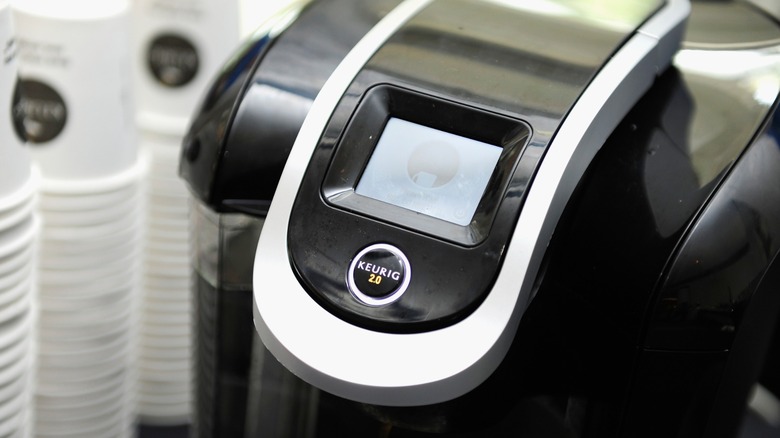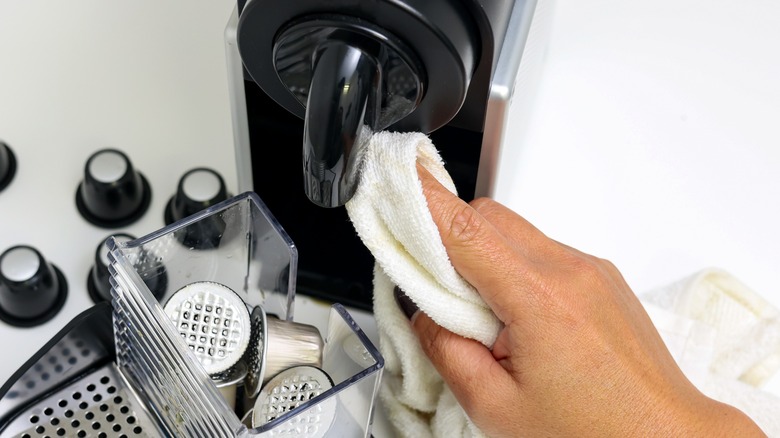Why Your Keurig Is Not Pumping Enough Water (& How To Solve The Issue)
Here's the setup. You've stumbled out of bed, shuffled your way into the kitchen, and headed over to your Keurig with thoughts of fresh, hot coffee running through your head. Unfortunately, something is wrong, and now the coffee maker isn't working; in fact, it isn't pumping nearly enough water through its systems to make that cuppa you so desperately need. What is wrong, and how do you fix it?
Well, one of the most common culprits behind this unwelcome lack of water and hot coffee is scale buildup within your Keurig, specifically in the water tank and tubing. Scale is a buildup of minerals, mainly calcium carbonate or calcium bicarbonate, which are found in water, including both bottled and tap. In fact, hard water can cause a ton of problems with limescale. When hot water evaporates, it leaves these minerals behind, creating stubborn deposits that can obstruct water flow. Over time, this accumulation acts like a traffic jam in the insides of your Keurig, interrupting what should be a seamless pump and brew cycle that you're accustomed to.
Luckily, you don't have to just toss your Keurig just yet. There are a couple of different ways you can address scale buildup in your water tank and tubes, depending on how bad it is and where said buildup is located, or you can prevent it by installing a water filter.
How to descale your Keurig
To start descaling your Keurig, start by removing the water reservoir, empty it, and then refill it about a third full before giving it a good old shake to dislodge any loose debris. Proceed to empty the reservoir and then locate the opening where the pump introduces water into the brewing system. Use a damp dishtowel and start cleaning your Keurig thoroughly, ridding it of any clingy debris. This simple act might be all it takes to restore your Keurig to its normal state.
If your machine continues to be a bit clogged, it's time to escalate your DIY efforts and reach for a turkey baster. Half-fill the reservoir, insert the baster into the connection point, and forcefully squeeze short bursts of water. This higher-pressure water should, hopefully, free any clinging scale, which is visible by cloudy water. Rinse the reservoir, refill, and try a new brew.
For the stubbornly clogged or those who may want to focus on preventative maintenance, you can use vinegar as a descaling agent. Mix vinegar and water in equal parts, fill the reservoir, and run a brewing cycle. This detox will help break down the scale, allowing for smoother running, and should be a part of your routine every couple of weeks to months, depending on how hard your water is. You can also buy a descaling agent that uses citric acid to break down the scale. In the end, if your machine is still not working, it may need a motor check or replacement.

